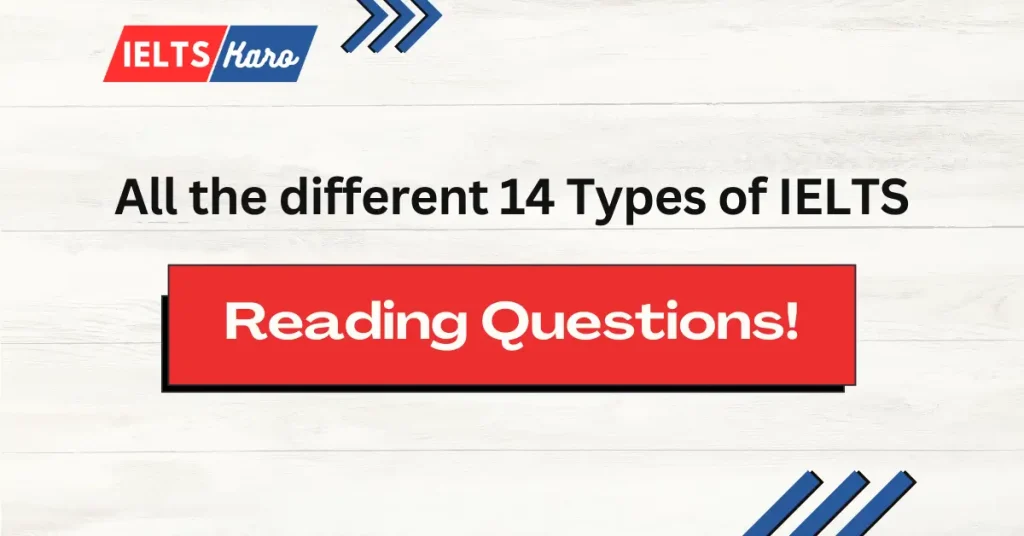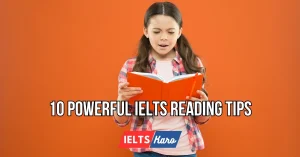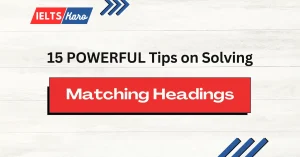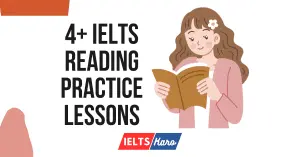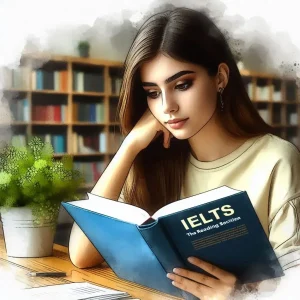The IELTS Reading Module tests your ability to skim, scan, read and understand the logic of the passages by answering 40 questions within 60 minutes. In total, there are 14 IELTS Reading Question types, and not all of them will be covered in one single test. But you can never be sure just which ones appear in the exam.
One strategy that differs high band achievers from average students is that they practice and master all 14 types of IELTS Reading Questions, instead of focusing on the most common ones such as summary complete, sentence completion, multiple choice, matching heading and matching title.
Here are all of these in more detail.
1. Multiple Choice Questions
What is it: Choose one correct answer from 3 or 4 options.
How: By scanning and skimming the paragraph. Focus on synonyms and the paraphrased sentences to ensure you get complete understanding of the statement. Do note that all MCQs come in a logical order and natural sequence of the passage. If you face difficulties in choosing the correct answer, try using the other route which involves eliminating wrong answers.
Example: Passage Excerpt:
The Industrial Revolution, which began in the 18th century, had a profound impact on society. It led to the rise of factories, urbanization, and significant technological advancements.
Question: What was one of the results of the Industrial Revolution?
A. The decrease in urbanization
B. The decline of factories
C. Substantial improvement in technology
D. The end of the 18th century
Answer: C. Substantial improvement in technology
Explanation: The passage mentions that the Industrial Revolution led to significant technological advancements. Notice how the words were changed in the actual question.
2. True False Not Given or Yes No Not Given Questions
What is it: Determine and decide if the writer’s opinion or the question statement matches, contradicts or is not available in the passage.
How: Skim, scan and identify specific information in the passage. Yes or True is if the information is found and matches exactly with the information given in the passage. No or False is if the information is completely contradicting in the passage. Not Given means that there is no information on that topic in the passage.
Just like multiple choice questions, these question types also come in a logical order and sequence of the passage.
Example: Passage Excerpt:
Marie Curie was the first woman to win a Nobel Prize, and she is the only person to have won Nobel Prizes in two different scientific fields.
Question: Marie Curie was the first person to win a Nobel Prize in two different scientific fields.
- True
- False
- Not Given
Answer: False
Explanation: The passage states that she is the only person to have won Nobel Prizes in two different scientific fields, not the first.
Here are some True False Not GIVEN TFNG IELTS Reading Practice Exercises.
Here are some True False Not Given TFNG IELTS Reading Information
3. Matching Headings
What is it: You need to match headings to the appropriate paragraphs or sections in the passage.
How: Understand the aim and meaning of a section. Note that Matching Headings is NOT the same as Matching Paragraphs. No 1 heading is repeated for another section. Hence, all headings will only be used once. You need to read the first and last line of the section and understand its main idea and supporting points. No answer comes in order. There could be more headings than the answers. Hence, carefully select the heading.
Example: Passage Paragraph:
The Amazon rainforest is often referred to as the Earth’s lungs because it produces a significant amount of the world’s oxygen. It is also home to a diverse array of wildlife and plant species.
Headings:
A. The importance of the Amazon rainforest
B. The wildlife of the Amazon
C. The geographical location of the Amazon
Answer: A. The importance of the Amazon rainforest
Explanation: The paragraph discusses the Amazon’s role in oxygen production and its biodiversity, indicating its importance. The paragraph does not mention the wildlife, or geographical location of the rainforest.
Here are some IELTS Reading Matching Headings detailed guide and practice lessons.
4. Matching Paragraph Information
What is it: These questions require test-takers to find specific information within the paragraphs of the passage.
How: This is NOT the same as Matching Heading, because any answer can be repeated for another section. You can have 2 information statements from one paragraph or section. However, you CANNOT have 2 headings from the same section. Heading sums up the entire crux of the passage, where matching paragraph information only talks about the information that can be matched in one particular paragraph.
Example: Passage Excerpt:
In 1969, Neil Armstrong became the first human to walk on the moon, an event that was broadcast live on television.
Question: Which paragraph contains information about the first televised moon landing?
Answer: The paragraph provided in the example.
Explanation: The paragraph explicitly mentions the moon landing and its broadcast on television.
5. Matching Features
This question type involves matching a list of statements or pieces of information to a list of features from the passage.
Example: Passage Excerpt:
Shakespeare wrote many plays, including tragedies like Hamlet and comedies like A Midsummer Night’s Dream.
Question: Match the following plays to their genres:
- Hamlet
- A Midsummer Night’s Dream
A. Comedy
B. Tragedy
Answer:
1 – B. Tragedy
2 – A. Comedy
Explanation: The passage categorizes Hamlet as a tragedy and A Midsummer Night’s Dream as a comedy.
6. Sentence Completion
What is it: Test-takers complete sentences using words from the passage. This is known as fill in the blanks in typical language. All answers come in order.
How to do it: Always follow the instructions. Choose the word or words and/or a number carefully. If there is “a” before the blank, then the word MUST NOT start with a vowel. If there is “an” before the gap, the answer MUST start with a vowel.
Example: Passage Excerpt:
The invention of the internet revolutionized the way people communicate and access information.
Question: The invention of the internet revolutionized the way people __________ and access information.
Answer: communicate
Explanation: The missing word directly comes from the passage.
7. Summary Completion
What is it: These questions require completing a summary based on the reading passages. This is more or less like filling in the blanks, but in a more logical order.
How to do it: Always follow the instructions. Choose the word or words and/or a number carefully. If there is “a” before the blank, then the word MUST NOT start with a vowel. If there is “an” before the gap, the answer MUST start with a vowel.
Example: Passage Excerpt:
The process of photosynthesis involves the absorption of sunlight by chlorophyll in the plant leaves. This energy is used to convert carbon dioxide and water into glucose and oxygen.
Question: Complete the summary using words from the passage: The process of photosynthesis uses __________ absorbed by chlorophyll to transform _____________ and carbon dioxide into glucose and oxygen.
Answer: sunlight, water
Explanation: The words are directly taken from the passage.
8. Diagram Label Completion
What is it: This type requires labeling a diagram using words from the passage.
How: You need to locate the information from the passage, and relate information to the diagram. Make sure to follow the instructions. Answers come in a logical order.
Example:
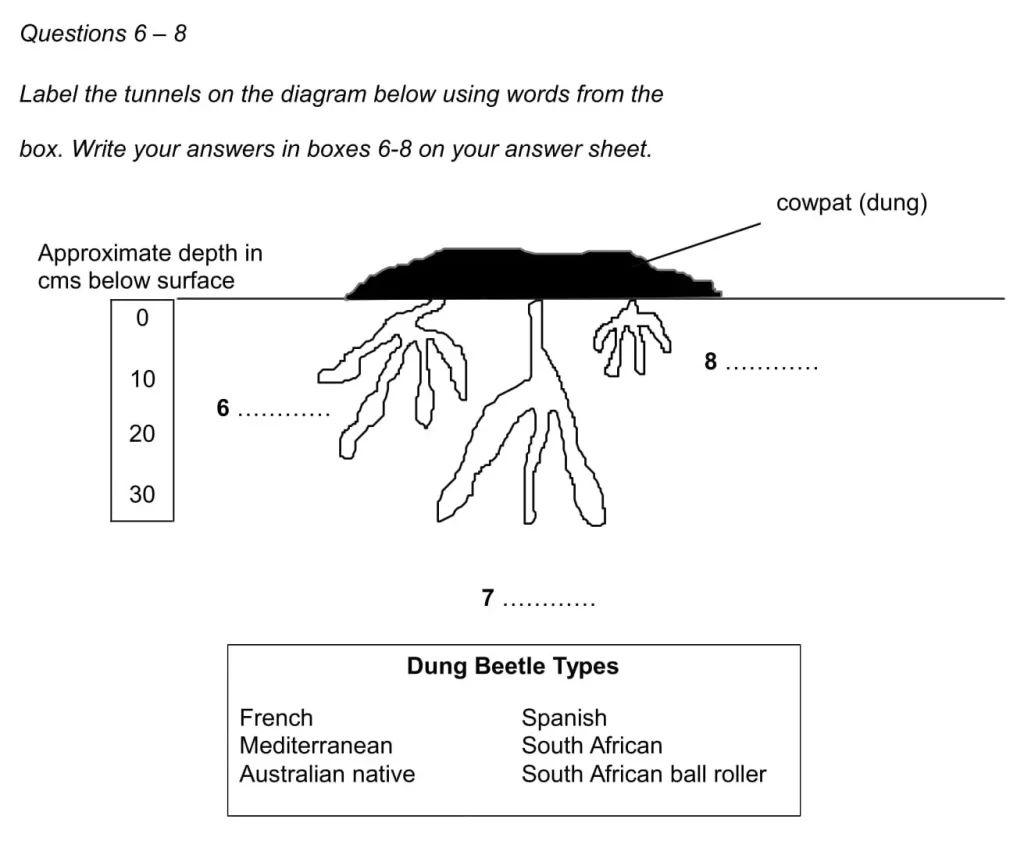
9. Short Answer Questions
These require short responses to questions using information from the passage.
Example: Passage Excerpt:
The Great Wall of China stretches over 13,000 miles and was built to protect against invasions.
Question: How long is the Great Wall of China?
Answer: Over 13,000 miles
Explanation: The answer is directly stated in the passage.
10. Identifying Writer’s Views/Claims (Yes/No/Not Given)
Similar to True/False/Not Given, but focuses on the writer’s opinions or claims.
Example: Passage Excerpt:
Some experts believe that climate change is the most significant challenge facing humanity today.
Question: The writer believes that climate change is the most significant challenge facing humanity.
- Yes
- No
- Not Given
Answer: Not Given
Explanation: The passage states that some experts believe this, not necessarily the writer.
Understanding and practicing these question types will help you become more adept at navigating the IELTS Reading section and improve your overall performance.
11. List Selection Questions
What is it: These questions require selecting a correct option from a list of information, words, and/or names. Do not confuse it with Multiple Choice Questions as you need to select correct answers for all questions only from one list.
How to do it: Always follow the instructions. Choose the word or words and/or a number carefully. If there is “a” before the blank, then the word MUST NOT start with a vowel. If there is “an” before the gap, the answer MUST start with a vowel.
Practice Exercise
Topic: Types of Learning Styles
Instructions:
- Read the following text about learning styles.
- Choose the FIVE learning styles mentioned in the text.
- Write the correct letters A-G next to the numbers 1-5.
List of Learning Styles:
A. Auditory
B. Kinesthetic
C. Visual
D. Analytical
E. Social
F. Tactile
G. Logical
Text:
There are various ways in which individuals prefer to learn and process information. Understanding these learning styles can significantly enhance the learning experience. Visual learners tend to grasp concepts better through images, charts, and diagrams. Auditory learners benefit from listening to lectures, discussions, and audio recordings. Kinesthetic learners learn best by doing, engaging in hands-on activities, and experiencing things firsthand. Social learners thrive in group settings, enjoying collaborative learning and discussions. While not strictly a learning style, logical learners excel at problem-solving and analyzing information in a structured manner.
Answers:
- A (Auditory)
- B (Kinesthetic)
- C (Visual)
- E (Social)
- G (Logical)
12. Choosing a Title: IELTS Reading
What is it: You have to choose the most appropriate and relevant title from a list of the passage. Do note that this is not the same as list selection. In Title Selection questions, you’ll be given a list of potential titles and asked to choose the best one that accurately reflects the overall content of the passage.
How to do it: Always follow the instructions. Understand the main aim of the passage and differentiate between supporting aim and details.
Understanding Title Selection Questions
It’s crucial to:
- Analyse the titles: Understand the meaning of each title.
- Identify the main idea: Determine the central theme of the passage.
- Match the title to the main idea: Choose the title that best encapsulates the overall content.
Practice Exercise
Topic: The Impact of Social Media on Mental Health
Instructions:
- Read the following passage about the impact of social media on mental health.
- Choose the most suitable title from the list below.
- Write the correct letter A-D next to the question.
List of Titles:
A. The Benefits of Social Media
B. Social Media and Mental Health Crisis
C. How to Use Social Media Safely
D. The Rise and Fall of Social Media
Text: Recent studies have shown a correlation between increased social media use and a decline in mental health, particularly among young people. Factors such as cyberbullying, unrealistic body image expectations, and the fear of missing out (FOMO) have been linked to anxiety, depression, and loneliness. While social media offers numerous benefits, it is essential to be aware of its potential negative impacts and to use it mindfully.
Answer: B. Social Media and Mental Health Crisis
13. Flowchart Completion Practice Lesson: IELTS Reading
What is it: In Flowchart Completion questions, you’ll be given a visual representation of a process or system with gaps to fill. You need to read the text and complete the flowchart with the correct information.
How: Here is what you need to do in order to answer these questions:
- Analyse the flowchart: Understand the process or system it represents.
- Identify keywords in the flowchart: These will guide your search in the text.
- Skim the text: Get a general overview of the passage.
- Scan for specific information: Locate the relevant parts of the text.
- Match information precisely: Ensure the information you fill in accurately reflects the text.
Practice Exercise
Topic: The Water Purification Process
Instructions:
- Read the following text about the water purification process.
- Complete the flowchart below using NO MORE THAN TWO WORDS from the text for each answer.
Text: Water purification is a crucial process to ensure safe drinking water. The first step involves removing large particles through a filtration process. This is followed by a sedimentation stage, where impurities settle at the bottom. The water is then disinfected using chemicals to kill harmful microorganisms. Finally, the water undergoes a second filtration to remove any remaining contaminants before it is distributed for consumption.
Flowchart:
- Water purification begins with the removal of large particles through a process called __________.
- The second stage involves the process of __________, where impurities settle.
- To kill harmful microorganisms, __________ is added to the water.
- The final stage is a second filtration to get rid of any leftover _________.
Answers:
- Filtration
- Sedimentation
- Chemicals
- Contaminants
14. Table Completion: IELTS Reading
Understanding Table Completion Questions
In Table Completion questions, you’ll be given a table with headings and information and asked to complete it with information from the text. It’s crucial to:
- Analyse the table: Understand the information it presents.
- Identify the headings: Determine the categories of information.
- Skim the text: Get a general overview of the passage. All of the information comes from the left to write, just like you are reading the text.
- Scan for specific information: Locate the relevant parts of the text.
- Match information precisely: Ensure the information you fill in accurately reflects the text.
Practice Exercise
Topic: Comparison of Different Types of Energy Sources
Instructions:
- Read the following text about different types of energy sources.
- Complete the table below using NO MORE THAN THREE WORDS from the text for each answer.
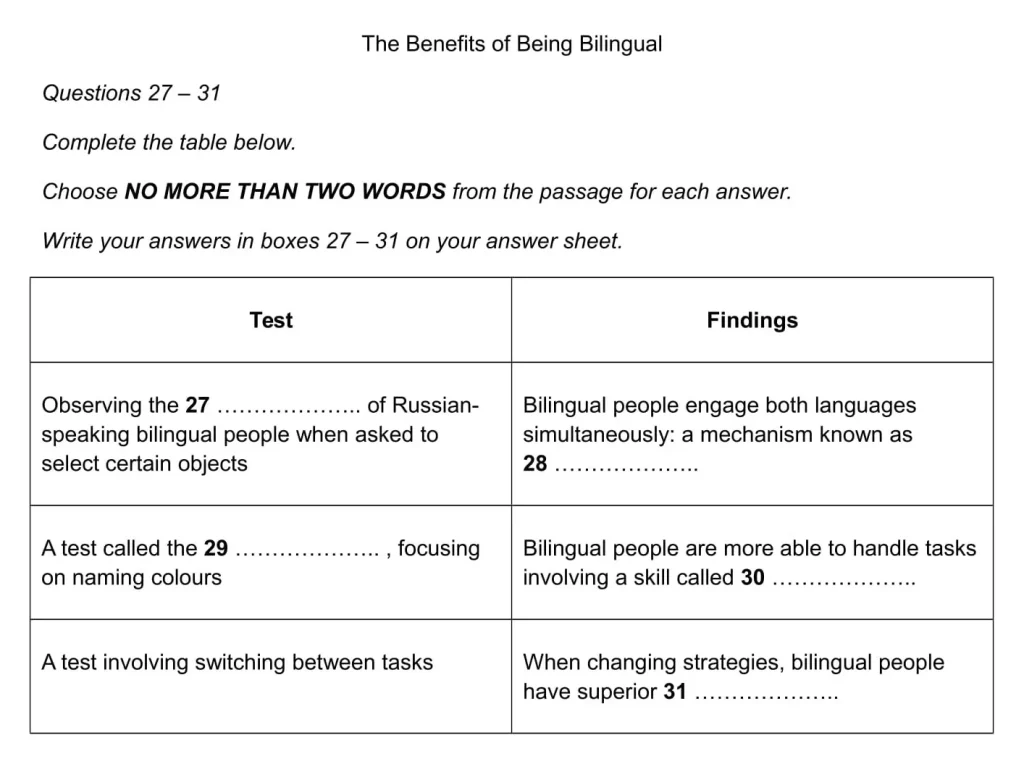
Here are some additional resources:

